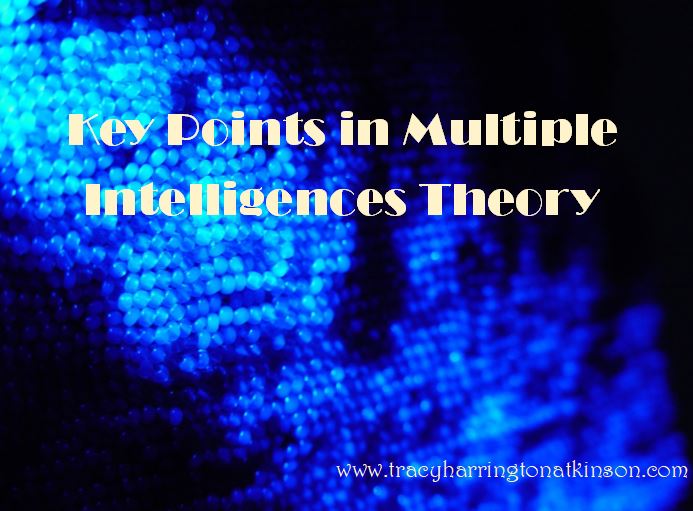 Key Points in Multiple Intelligences Theory
Key Points in Multiple Intelligences Theory
Armstrong (2009) shares four foundational points to recall when using Gardner’s multiple intelligences theory.
Each person possesses all the intelligences.
Multiple intelligences is not a theory where each person functions within a specific fit. In contrast to learning theories, multiple intelligences dictates that each of the intelligences work together in an individual, but in ways which are unique. Generally, individuals will function highly in one or more intelligences while the rest of the intelligences remain underdeveloped.
Most people can develop each intelligence to an adequate competency level.
Nearly everyone has the capability to function in each of the intelligences despite asserting a fervent deficiency in one intelligence or another. Additionally, nearly everyone has the capability to develop and evolve in each of the intelligences if “given the appropriate encouragement, enrichment and instruction” (Armstrong, 2009, p15).
Intelligences can work together in complex ways.
Simply stated, no intelligence exists alone. These intelligences work together, interacting during a learning or functioning experience. Armstrong (2009) shares the interaction of intelligences while cooking. First, the cook will read the recipe (linguistic), followed by measuring the ingredients (logical-mathematical) and creating a menu to appease the appetite of self and guests (intrapersonal and interpersonal).
There are a variety of ways to be intelligent within each category.
Gardner (2006) emphasized the diversity in which intelligences can be demonstrated. Although one may possess kinesthetic intelligence will not naturally infer a superior ability to play sports.
Sources:
Armstrong, T. (2009). Multiple Intelligences in the Classroom. ASCD: Alexandria, Virginia.
Gardner, H. (2006). Multiple intelligences. New York, New York: Basic Books.
Tracy Atkinson, mother of six, lives in the Midwest with her husband and spirited long-haired miniature dachshunds. She is a teacher, having taught elementary school to higher education, holding degrees in elementary education and a master’s in higher education. Her passion is researching, studying and investigating the attributes related to self-directed learners and learning styles. She has published several titles, including MBTI Learning Styles: A Practical Approach, The Art of Learning Journals, Calais: The Annals of the Hidden, Lemosa: The Annals of the Hidden, Book Two, Rachel’s 8, The Personal Pursuit of Perfection and Securing Your Tent. She is currently working on a non-fiction text exploring the attributes of self-directed learners: The Five Characteristics of Self-directed Learners.


Comments are closed